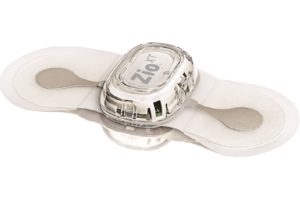
iRhythm Technologies has announced the results of three clinical research studies presented at the American College of Cardiology’s annual scientific sessions (ACC 2022, 2–4 April, Washington DC, USA).
According to iRhythm, the evidence further validates the Zio service as a viable solution for the early detection of atrial fibrillation (AF), helping undiagnosed populations effectively seek treatment before more serious problems can occur, as well as showing that the Zio service can positively impact hospital resources. Further to this, there is evidence that the system supports the need for monitoring post-transcatheter aortic valve implantation (TAVI) discharge in high-risk patient populations.
“As the healthcare system continues to progress towards value-based medicine, we recognise that providers are increasingly challenged to improve clinical outcomes for patients while controlling costs,” said Dietra Jones, executive vice president, Clinical Operations at iRhythm. “We are excited that these new data continue to demonstrate that Zio’s clinical accuracy is beneficial in directing patient care across a variety of settings, while improving clinical workflows and hospital capacity. We are also particularly encouraged to see further evidence of Zio’s ability to support early detection and diagnosis of AF in moderate-risk populations.”
The Syncope study found that Zio AT was able to monitor and aid in diagnosis of qualified syncope patient candidates in an outpatient setting. Implementation of Zio AT allowed health systems to safely monitor patients upon discharge, avoiding a potential 24‒48 hour hospital stay. Additionally, 8.2% of patients had an arrhythmia event triggering a notification. Nearly half (46%) of these occurred after 48 hours (longer than atypical inpatient stay)—demonstrating the importance of 14-day monitoring with Zio AT, iRhythm said in a press release. Finally, it was concluded that use of Zio AT saved the healthcare system an estimated 136 inpatient hospitalisation days.
The GUARD-AF study reports the initial findings in 5,713 patients who wore the Zio XT monitor. Among the older primary care population in the study, 4.5% had AF detected within two weeks of monitoring: 0.5% of screened participants had persistent AF and 4% had paroxysmal AF detected.
Lastly, research highlighted in the Rutgers-TAVR study demonstrates that monitoring with Zio AT post-TAVR discharge can identify AF, high degree atrioventricular block (HAVB), and supraventricular tachycardia (SVT) in patients who are at risk for arrhythmic disorders. During monitoring, in which patients wore the device for up to 14 days, the most common arrhythmias were AF (25%) followed by HAVB (7%) and SVT > 30 secs (6%). The results support the need for monitoring post-TAVR discharge in high-risk patient populations.












